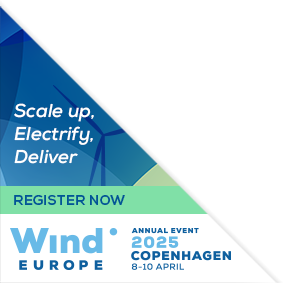Posters
Siblings:
ProceedingsProgrammeSpeakersPostersContent PartnersPowering the FutureMarkets TheatreResearch & Innovation in actionStudent programmePresenters dashboardCome meet the poster presenters to ask them questions and discuss their work
We would like to invite you to come and see the posters at our upcoming conference. The posters will showcase a diverse range of research topics, and will give delegates an opportunity to engage with the authors and learn more about their work. Whether you are a seasoned researcher or simply curious about the latest developments in your field, we believe that the posters will offer something of interest to everyone. So please join us at the conference and take advantage of this opportunity to learn and engage with your peers in the academic community. We look forward to seeing you there!

PO314: Obsolescence management in onshore windpower - criticality assessment and mitigation approaches
Dana Holstein, Product Manager eCommerce, ENERCON
Abstract
In the past, onshore wind energy converters (WEC) were designed and certified for a life expectancy of 20 years. Due to constantly rising energy costs and long approval procedures, it is obvious that it is profitable for operators to extend the operating times of their WECs. Original equipment manufacturers (OEMs) are responding to this demand by offering 30-year service contracts. At the same time, however, this trend obliges manufacturers to keep the relevant spare parts in stock and secure its supply for a significantly longer period of time. In order to still be able to deliver reliably, WEC manufactures must take action against the threat of obsolescence. The increase in demand for spare parts and services is a challenging task, many WEC manufactures are not sufficiently prepared for yet. The risk of obsolescence depends on a multitude of factors and varies greatly depending on the type of (spare-) part. The majority of parts do not pose a threat but the key to any successful obsolescence management (OM) is to focus on the items that present the greatest exposure to risk. For example, in the case of sensitive electronics like printed circuit board assemblies (PCBAs), it is a complex challenge to guarantee the compatibility of hardware and software despite the significantly shorter life cycles of these components. On the other hand, the provision of major components like blades may lead to different challenges for WEC manufacturers. Consequently, obsolescence drivers are multi-faceted. This paper aims to provide answers on how to focus on the most critical items and derive appropriate measures against the risk of obsolescence. A methodology for determining criticality at item level is applied while taking into account the respective demand forecast. This data-driven assessment serves as the starting point for mitigation actions.










